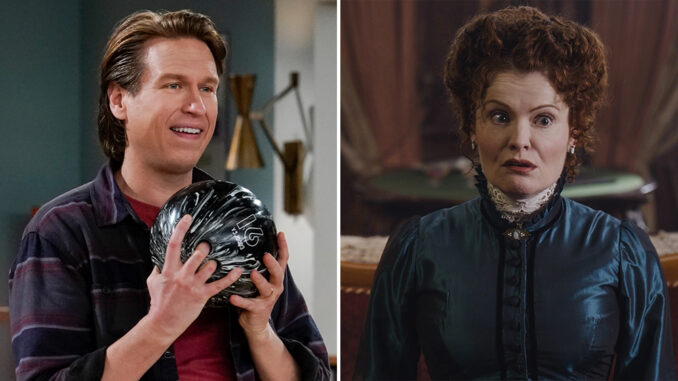
Second Banana Blues: How "How We Roll" Rolled in After the Ghostly Hype
The broadcast television landscape, once a verdant field of sitcoms, has become a more arid terrain, where survival depends on cunning strategies and a healthy dose of luck. Last season, CBS found unexpected gold in the form of "Ghosts," a quirky, heartfelt comedy that captured the zeitgeist and garnered a massive audience. Riding on the coattails of this spectral success, "How We Roll," a bowling-themed sitcom, managed to snag the title of the second most-watched comedy premiere of the season. But beneath the surface of this seemingly triumphant debut lies a more nuanced story, one about the power of lead-ins, the challenges of forging an independent identity, and the ever-present pressure to prove one's worth in a world dominated by phantoms.
The strategic placement of "How We Roll" immediately following "Ghosts" was no accident. Network executives understood the potent appeal of the supernatural comedy and hoped to funnel a significant portion of its audience to their new offering. In essence, "How We Roll" was given a golden ticket, a prime-time real estate inheritance bestowed upon it simply by virtue of its proximity to a proven hit. This initial boost undoubtedly contributed to its impressive premiere numbers, allowing it to bask in the reflected glory of its ghostly predecessor. The question, however, remained: could "How We Roll" transcend its position as a mere beneficiary and establish itself as a standalone success?
The premise of "How We Roll" is undeniably relatable. The series follows Tom Smallwood, a laid-off auto worker who decides to pursue his lifelong dream of becoming a professional bowler. It's a quintessential underdog story, imbued with themes of perseverance, familial support, and the pursuit of happiness against all odds. The show attempts to tap into the same well of everyday struggles and heartwarming moments that resonated with viewers of "Ghosts." However, the execution falls short of the ethereal brilliance of its lead-in. While "Ghosts" boasts a unique narrative hook, sharp writing, and a diverse cast of endearing characters, "How We Roll" often relies on more conventional sitcom tropes and a more predictable comedic rhythm.
The show's reliance on predictable humor and familiar storylines raises a crucial point: can a show relying on borrowed momentum truly flourish? While the initial audience draw was undeniable, the long-term survival of "How We Roll" hinges on its ability to cultivate its own dedicated fanbase. This requires more than just a strategic time slot; it necessitates crafting compelling characters, developing original storylines, and finding a unique comedic voice. The shadow of "Ghosts" looms large, constantly reminding viewers (and critics) of the higher bar set by its predecessor.
The pressure to escape this spectral shadow is immense. "How We Roll" must prove that it is more than just a lucky recipient of "Ghosts'" popularity. It must demonstrate its own comedic strengths, its own unique storytelling abilities, and its own capacity to connect with audiences on a deeper level. The challenge lies in striking a balance between acknowledging the debt owed to its lead-in and forging its own distinct identity. It must leverage the initial exposure to build a lasting foundation, one that relies on its own merits rather than borrowed success.
Ultimately, the success of "How We Roll" will not be measured solely by its premiere viewership numbers. It will be determined by its ability to retain and expand its audience, to develop memorable characters that viewers connect with, and to create a comedic world that is both familiar and uniquely its own. The show has a unique opportunity to learn from the success of "Ghosts," to glean insights into what resonates with viewers and to adapt those lessons to its own narrative. However, it must also be willing to break free from the established formula, to take risks, and to embrace its own comedic voice. Only then can "How We Roll" truly roll its way to long-term success, proving that it is more than just a second banana in the sitcom orchard. The bowling alley awaits, and the pins are set; it's time for "How We Roll" to prove it has what it takes to knock them down.
